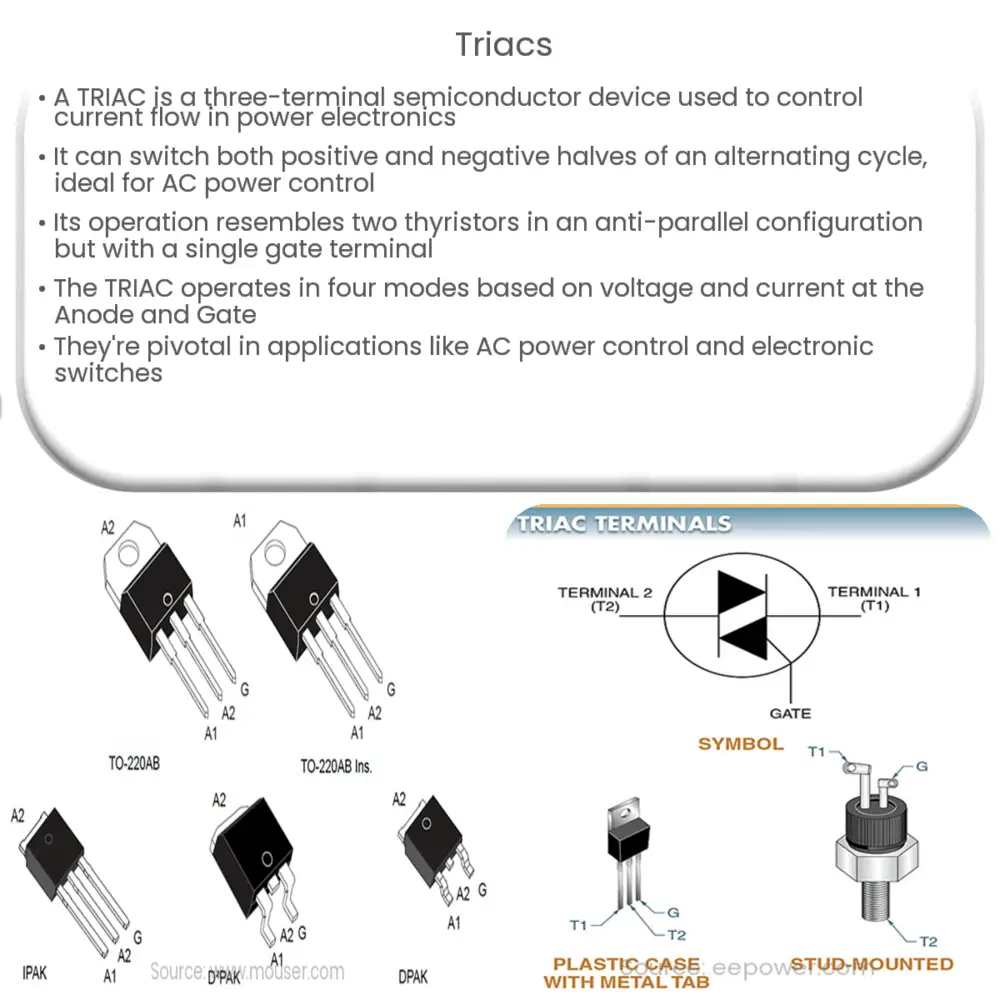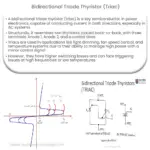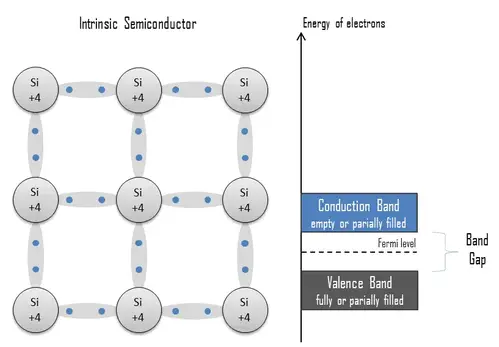Explore the essentials of TRIACs – their operation, structure, modes, applications, pros & cons, and role in modern electronics.

Introduction to TRIACs
A TRIAC, or Triode for Alternating Current, is a three-terminal semiconductor device often used in power electronics applications to control current flow. A TRIAC can switch both halves of an alternating cycle (positive and negative), thus making it an ideal component for controlling AC power.
Principle of Operation
The TRIAC works on the principle of bidirectional controlled switch. Its operation is similar to that of two thyristors connected in anti-parallel configuration, but with one gate terminal.
The basic structure of a TRIAC includes three layers that form NPN (Negative-Positive-Negative) and PNP (Positive-Negative-Positive) structures, with the anode and cathode on the outer layers. The TRIAC can be turned on by a small current or voltage applied to the gate terminal.
Symbol and Structure
The symbolic representation of a TRIAC involves three terminals: the Anode 1 (A1), Anode 2 (A2), and the Gate (G). Anode 1 and Anode 2 are interchangeable because the TRIAC is bidirectional. The gate terminal (G) is used to control the device.
Operation Modes
A TRIAC operates in four different modes:
- Quadrant I: Positive voltage at the Anode and positive current with positive gate current.
- Quadrant II: Positive voltage at the Anode and positive current but with negative gate current.
- Quadrant III: Negative voltage at the Anode and negative current with negative gate current.
- Quadrant IV: Negative voltage at the Anode and negative current, but with positive gate current.
These operating quadrants are important to understand for the correct implementation of TRIACs in different circuits.
Applications of TRIACs
TRIACs are widely used in numerous applications because of their ability to control large amounts of power and voltage. These include:
- AC power control: TRIACs are used to control AC power, usually by adjusting the phase angle of the voltage waveform. This application is common in light dimmers and motor speed controls.
- Switching applications: In certain appliances like heaters and lamps, TRIACs serve as electronic switches.
This ability to control AC power and work as switches make TRIACs an essential part of many electronic devices and systems.
Other Significant Uses
TRIACs are also essential in various other fields:
- Temperature control systems: In systems that require precise control of temperature like ovens or air conditioners, TRIACs are employed to control the power supplied to the heating or cooling elements.
- Induction motor speed control: TRIACs are used to control the speed of induction motors in various household appliances, such as fans or power tools, by varying the amount of power applied to the motor.
Advantages and Disadvantages
Like any other component, TRIACs have their own set of advantages and disadvantages which need to be considered during their implementation.
- Advantages: The major advantage of a TRIAC is its ability to control both halves of an AC cycle, making it highly efficient for AC power control applications. They are also cost-effective and compact, making them suitable for small appliances.
- Disadvantages: TRIACs are less sensitive in the third quadrant operation, leading to issues with reliable triggering. They are also susceptible to dV/dt snubbing, which is a rapid change in voltage that can inadvertently turn on the TRIAC.
Conclusion
TRIACs, with their ability to control AC power and perform bidirectional switching, are an integral part of modern electronic circuitry. These components are used extensively in various power electronics applications, ranging from household appliances to industrial equipment. However, careful consideration of their strengths and weaknesses is necessary to optimize their implementation. As technology continues to evolve, the versatility of TRIACs will no doubt continue to be a critical aspect of electronic design and innovation.



